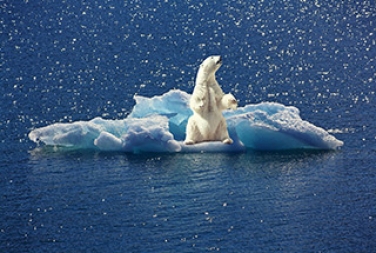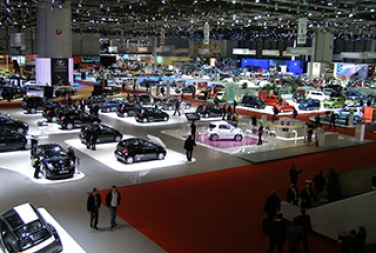SORMAC-23
A REFERENCE SCENARIO (BAU)
Business as usual
In this scenario, optimal growth is considered for each coalition with an unlimited emissions budget and no temperature increase constraint. However, the damage caused by the temperature increase is taken into account. It is therefore a "cost-benefit" analysis.
Population Growth
The demographic forecasts until the end of the 21st century are: a stabilization of the population of the OECD countries, a decrease of the population of the BRIC countries but a strong growth of the countries of the rest of the world (ROW)
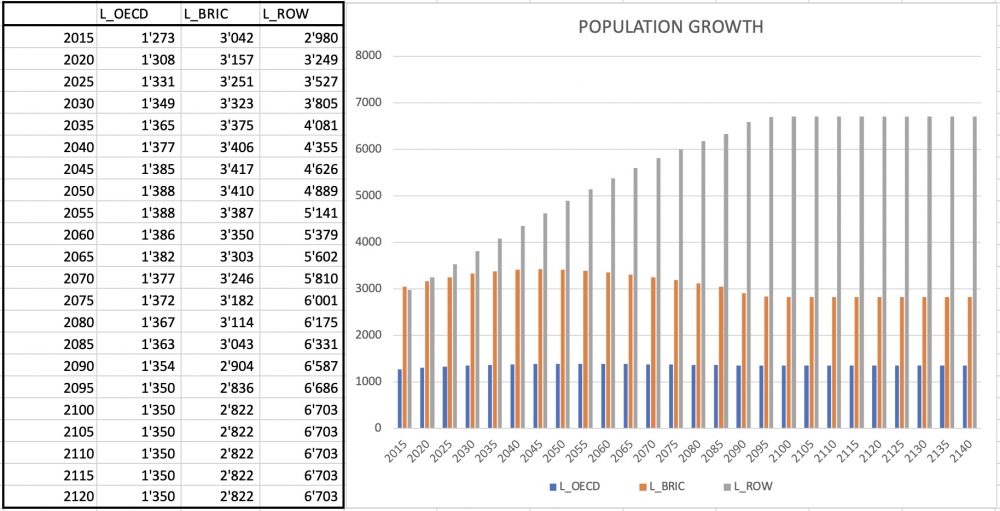
In million of people
PER CAPITA CONSUMPTION
The evolution of the population's welfare is represented by the trajectory of per capita consumption.
In thousands of $(2014) per year
Between 2015 and 2115 per capita consumption increases for OECD countries (by a factor of 2.5) but increases by a factor of 4.5 for BRIC countries and by a factor of 8.6 for the rest of the world (ROW).
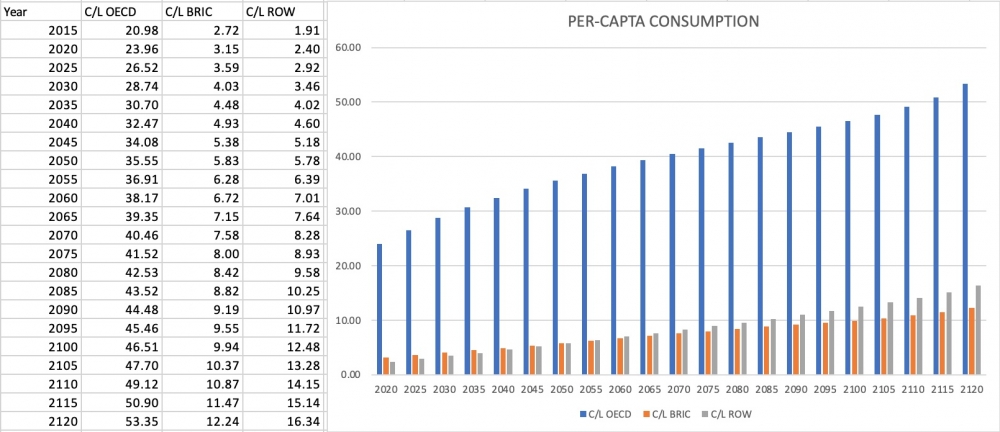
Output Growth
The economic weight (GDP) of the Rest of the World (ROW) countries will become preponderant, while that of the BRIC countries will decrease and that of the OECD countries will remain more or less constant.
In billion $(2014)
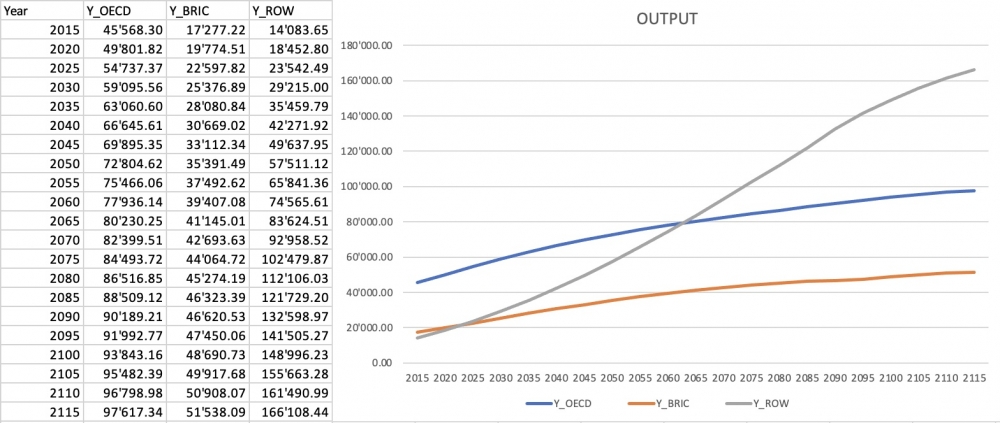
GHG EMISSIONS
Fossil energy use results in a level of greenhouse gas (GHG) emissions, expressed here in Gigatons of CO2 per year.
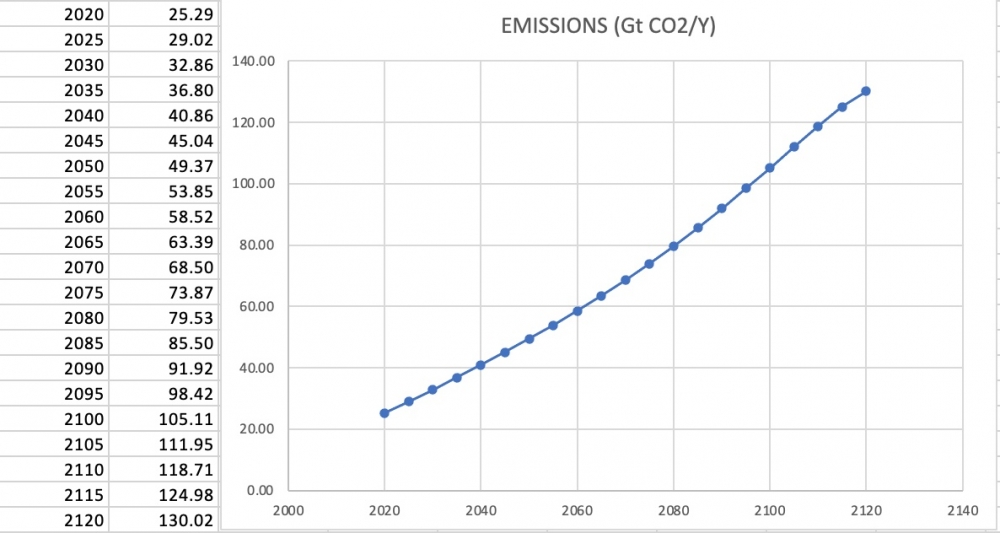
Without Damages.
If one does not take into account the economic damages due to temperature change, the GHG emissions reach 180Gt/Y, and start increasing as soon as 2020.
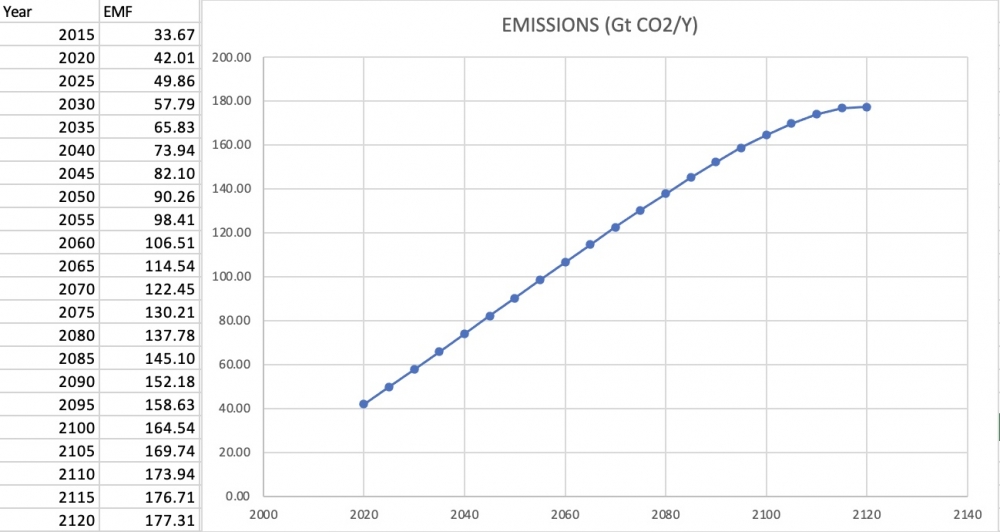
SAT INCREASE
Using the climate module of the DICE-2014 model we obtain the following evolution of the increase in atmospheric surface temperature (in degrees Celsius). As we might have suspected, considering the shape of the damage function, the temperature increase is close to 5 degrees C after a century.
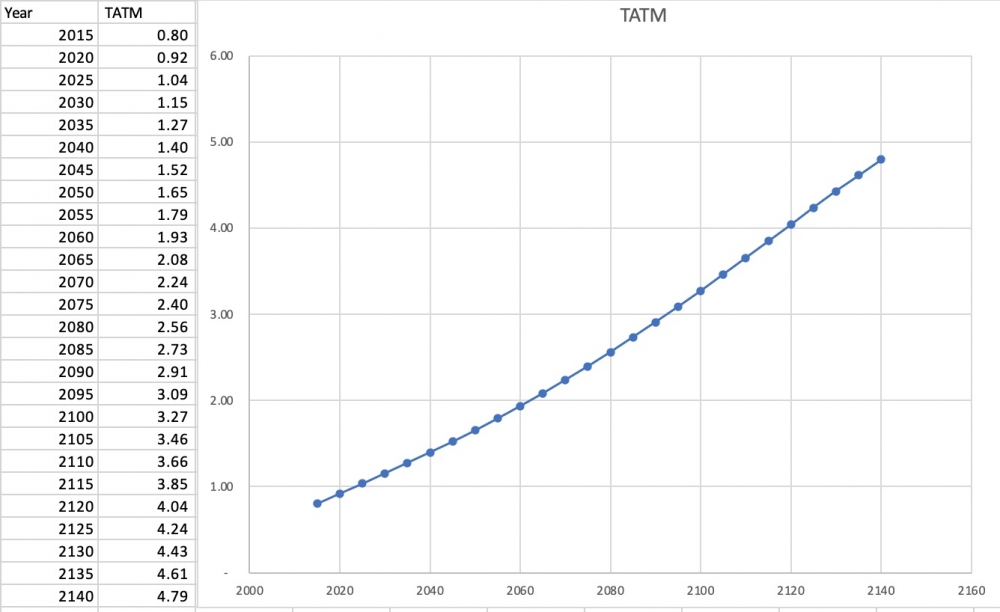
Without Damages
If economic damage is not taken into account, the temperature rise is almost 6 degrees, more than one degree higher than in the case of a cost-benefit analysis.
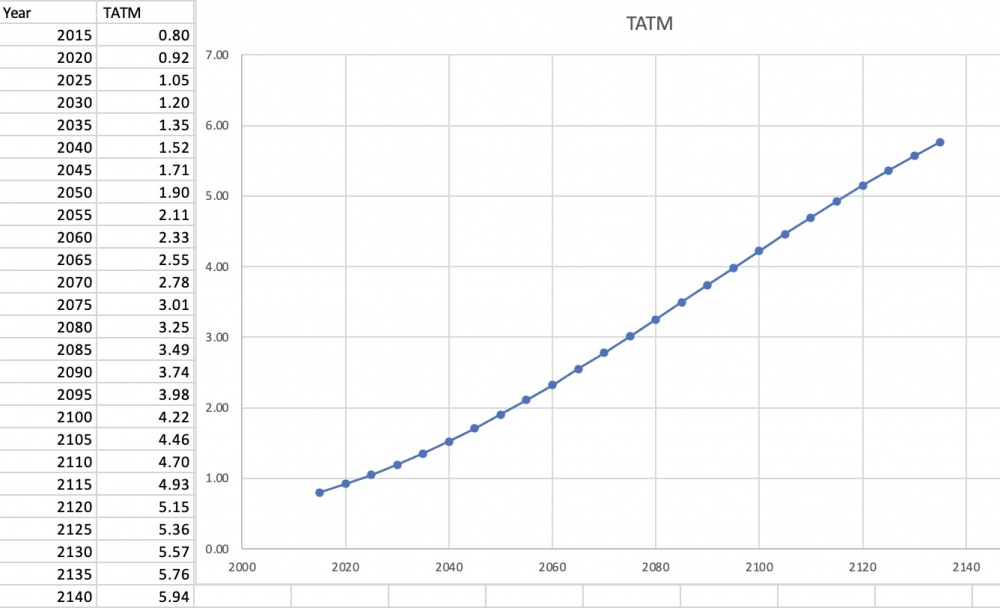
ENERGY CAPITAL
The capital of fossil energy production (K1) and that of renewable energy (K2) will increase, especially for ROW countries that will invest heavily in renewable, as it is more efficient.
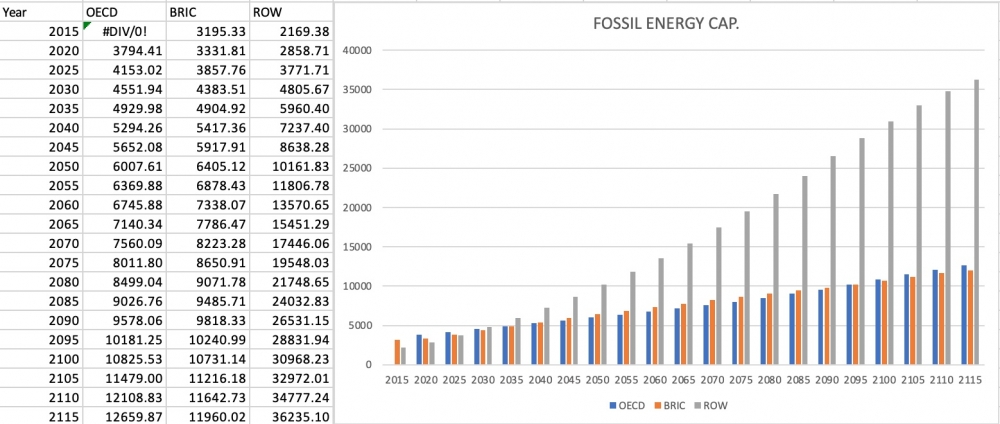
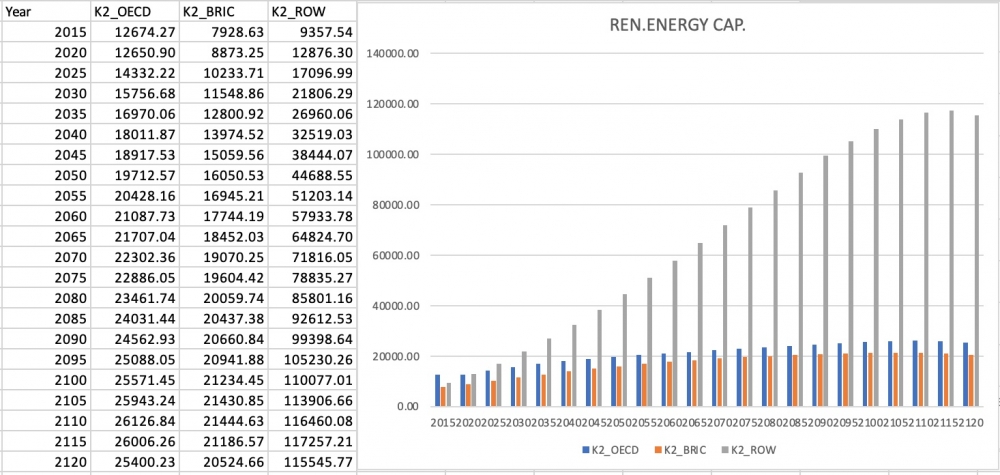
Return


